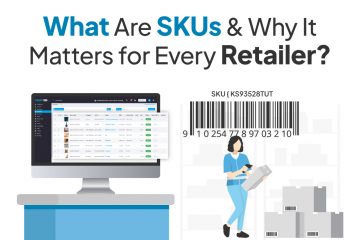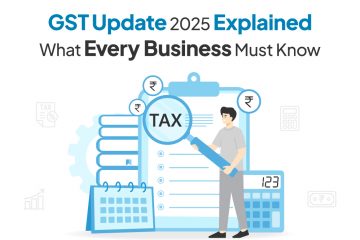How Retailers Can Manage Unsold Inventory?
February 15, 2024

Excess inventory is a common issue that retailers face. Even with the best demand forecasting tools and techniques and years of experience in the industry, retailers may not completely make an accurate prediction about inventory requirements. This results in excess inventory which they might not be able to sell easily. Such ‘unsold inventory’ requires disposal and retailers can find it overwhelming to get rid of the surplus inventory.
However, there are retail inventory management techniques that one can implement to eliminate dead stock and unsold/excess inventory.
This article suggests the best ways for how retailers can deal with unsold stock.

Almost all retailers have experienced the Bullwhip effect at least once in their retail business. The Bullwhip effect is a phenomenon that refers to demand fluctuations and wrong forecasting in the retail supply chain. Mostly, it happens when retailers order in bulk quantities from wholesalers anticipating high demand for the product.
Such errors may occur due to retailers’ wanting to take advantage of bulk discounts by wholesalers, leading to excessive inventory levels. Inaccurate demand forecasting further exacerbates the effect.
Examples of the Bullwhip effect in retail can be seen in various situations. For instance, during seasonal sales or promotions, retailers may overestimate demand and order excessive quantities of products.
This can result in excess inventory that is difficult to sell. Another example is when retailers panic and place large orders in response to unexpected demand spikes or shortages.
Note: We are assuming that the retailer is unable to send the items back to the supplier. Retailers who have such arrangements with the suppliers where they can send back the unsold inventory to wholesalers or distributors will not need solutions to get rid of the unsold inventory.

Unsold stocks can be used for marketing/advertising purposes. This strategy converts the unsold inventory holding costs into marketing benefits. Retailers can offer deep discounts on unsold items to create a purchase appeal. Such offers can be also used to incentivize regular customers.
However, remember to keep such discounts for a limited time to create a sense of urgency. This is particularly important for selling items that have short shelf life or products that are approaching their expiry dates.
Retailers often face the challenge of unsold inventory, which can be costly and take up valuable space in their stores or warehouses. One effective strategy for eliminating unsold inventory is bundling items together. In the bundling strategy retailers create a package deal where they can sell related products together at a discounted price.
By bundling items, retailers can attract customers with a bundle that encourages them to purchase more than they initially intended. This not only helps to clear out unsold inventory but also increases the average transaction value for the retailer.
Instead of letting unsold items gather dust in the warehouse or storeroom, retailers can explore opportunities to repurpose or recycle them. One option is to repurpose the inventory by finding alternative uses for it. For example, retailers can sell it to companies that specialize in upcycling or refurbishing items. This can involve sending the items to recycling centers where they can be broken down and used to create new products.
By exploring these recycling opportunities, retailers can not only get rid of their unsold inventory but also contribute to sustainability efforts and reduce waste.
Unsold inventory ties up capital and takes up valuable in-store space. Retailers can go for clearance sales offers by utilizing both in-store and online platforms. Instore clearance sales can be promoted through attractive signage and advertisements, enticing customers to visit the physical store and take advantage of discounted prices. Online clearance sales, on the other hand, can be promoted through email marketing campaigns, WhatsApp messaging, and social media platforms.
Fashion retailers may choose to discount specific items like shoes, clothes, or bags if they are not selling easily. Retailers can also consider renting temporary retail space for pop-up shops for clearance sales.
If you operate multiple stores, you can strategically transfer excess inventory from stores with unsold stock counts to those with greater sales potential. One effective strategy for retailers to manage unsold inventory is through stock transfers between retail stores. When a certain SKU is underperforming in one store but is doing well in another, initiating a stock transfer can help retailers get rid of unsold inventory and optimize their sales.
By moving the underperforming inventory to a store where it has a higher demand, retailers can avoid potential losses and increase the chances of selling the product.
Identifying and handling unsold inventory can be a challenge, particularly for retailers with extensive and varied product offerings. Other than the 5 best ways to address unsold inventory issues discussed in the article, retailers can also go for flash sales, rebranding, or visual merchandising. These tactics are effective ways to handle unsold inventory situations.
Inventory management software with demand forecasting report analytics and optimal stock management features can help retailers avoid unsold/excess inventory situations.

SKUs or stock keeping units are a blend of characters a...
July 27, 2025

GST Update 2025 revolutionizes taxation with only two s...
September 5, 2025
